Top 8 Marine Animal Encounters in Baja California Sur
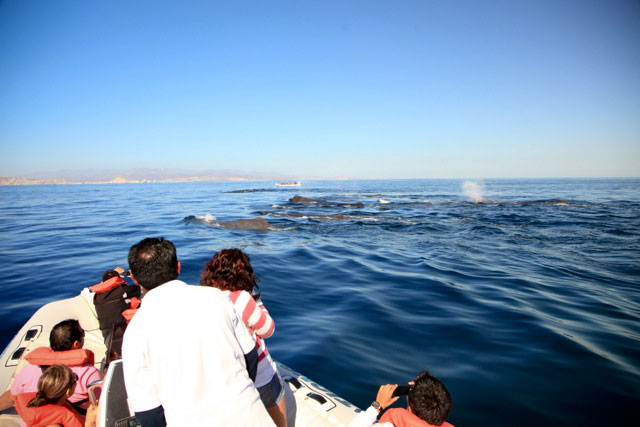

Oscar Ortiz heads up Cabo Expeditions, one of the leading operations of environmentally friendly excursions in Los Cabos. Specializing in marine tours, from kayaking in the scenic waters of Cabo, to swimming with majestic whale sharks, Oscar has seen his share of incredible ocean life in Baja California Sur. With the dazzling abundant variety of marine creatures in the beautiful Sea of Cortez, there’s no shortage of photo-worthy encounters to be had. Here, Oscar shares his top marine animal experiences:
1. The Ultimate: Blue Whale – The largest animal that is known to have existed on the planet, the blue whale (Balaenoptera musculus) can reach lengths of up to 90 feet. This magnificent giant comes with “a heart is the size of small car, and a tongue that weighs as much as an elephant,” says Oscar. A baleen whale that lunge feeds for krill, this largest animal feeds on some of the smallest in the sea.
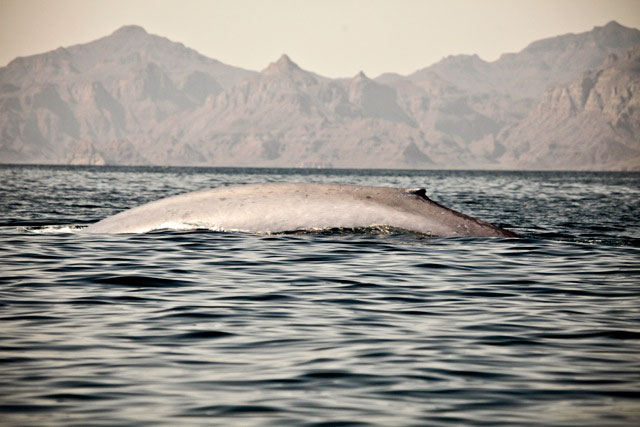
2. The Divers: Sperm whales – The second largest whales, sperm whales (Physeter macrocephalus) have the amazing adaptation as the deepest diving marine mammal. Diving to depths of 4,000-9,000 feet, these behemoths feed on an equally imposing prey: giant squid. Many times the blocky heads of these animals show a thick web of scars, from fights with other whales or with giant squid.
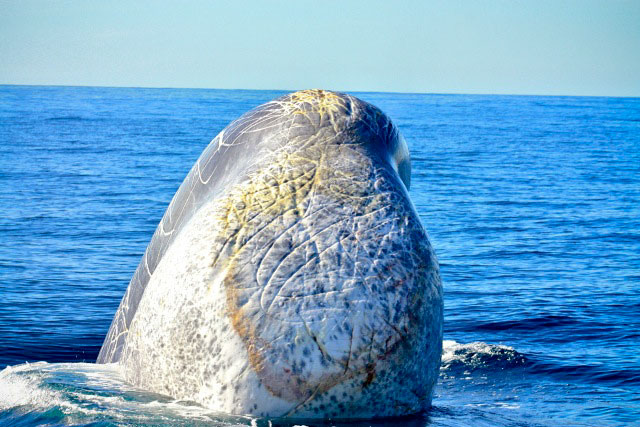
3. The Crooners: Humpback Whales: “Listening to the songs of these mammals can really touch your soul,” says Oscar. Humpback whales (Megaptera novaeangliae) winter in warm Baja waters, and are frequently seen by visitors on whale watching tours in season. The complex songs of male humpbacks are among the most beautiful sounds in nature. Theories propose that the songs serve as a form of communication between males, or perhaps play a role in mating. Oscar’s team at Cabo Expeditions has been able to capture recordings of these elaborate songs during their whale watching tours.
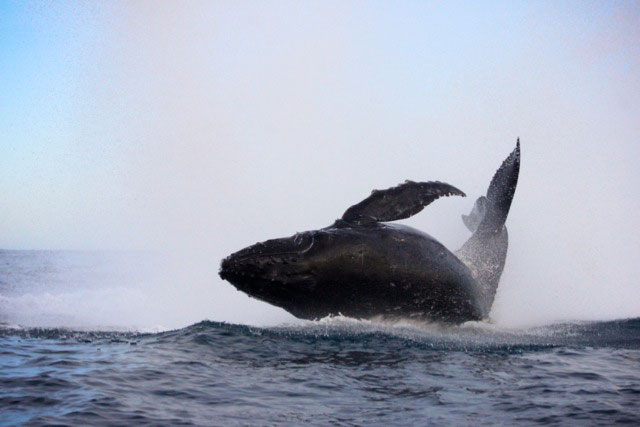
4. The Big Fish: Whale sharks – The largest fish species, whale sharks (Rhincodon typus) are slow-moving gentle giants that filter feed mainly on plankton. Although huge in size (they can reach lengths over 40 ft.), these fish are known for their docility, and are a favorite of divers in the Sea of Cortez.
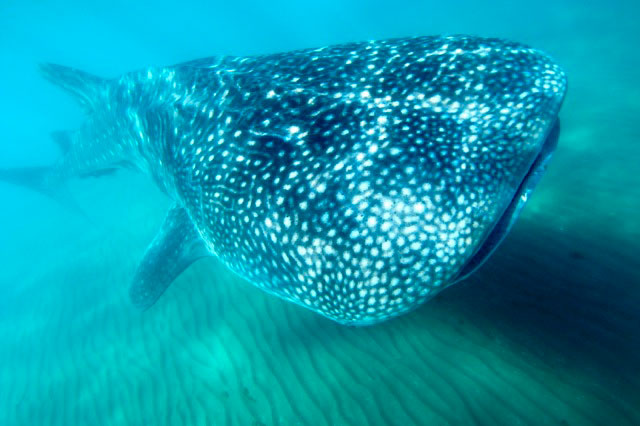
5. The Big Babies: Baby Gray Whales – Every winter, gray whales (Eschrichtius robustus) make an epic trek from their summer homes in the Arctic to the birthing grounds of the Sea of Cortez in Baja. Here, they give birth to the next generation in the warm waters. In the San Ignacio Lagoon in Baja California Sur, visitors can get up close with the adorably giant babies. The curious mothers and their babies are known to surface within touching distance of visitors aboard whale watching boats led by experienced guides.
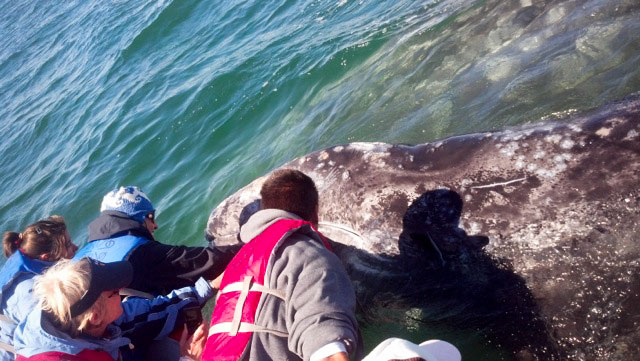
6. The Elegant Titans: Giant Mantas: “Baja California is one of the best places in the world to interact with these glamorous giants,” says Oscar. Reaching widths of 23 feet or more, these enormous rays glide with remarkable grace through the sea, appearing to fly with their huge “wings”– and are a favorite of Baja divers. Giant Mantas (Manta birostris) feed on plankton, crustaceans and small fish.
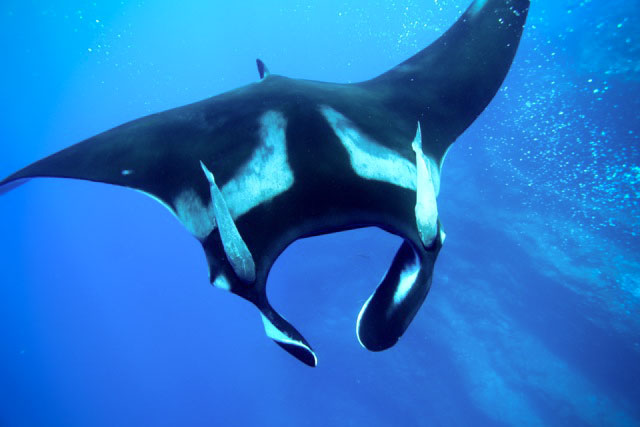
7. The Apex Predator: Orcas: The Sea of Cortez is home to a thriving ecosystem, with amazing creatures big and small. Part of any healthy ecosystem are the top-level predators, and Baja is home to some of the world’s most impressive. Orcas are also known as “killer whales,” but are part of the dolphin family. Sometimes called the “wolves of the sea,” these striking black and white marine mammals are known to hunt in pack-like groups, feeding on anything from fish to other marine mammals.
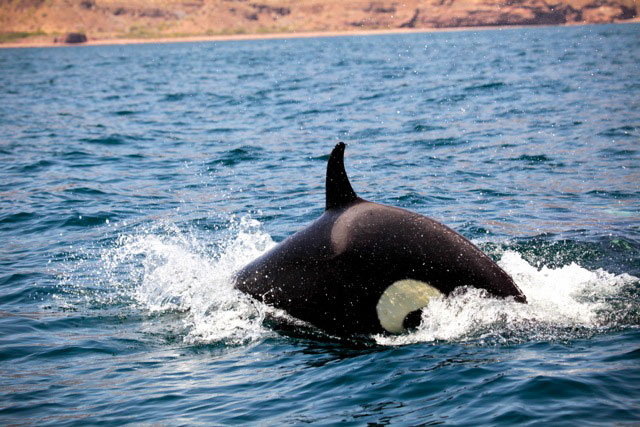
8. And Another Apex Predator: Great Whites: Great White Sharks (Carcharodon carcharias) are among the most feared predators in the sea, thanks to notoriety gained by movies like “Jaws.” Growing up to 20 ft. in length, these powerful predators eat a diverse diet including pinnipeds (seals, sea lions), cetaceans (porpoises, dolphins) and fish.
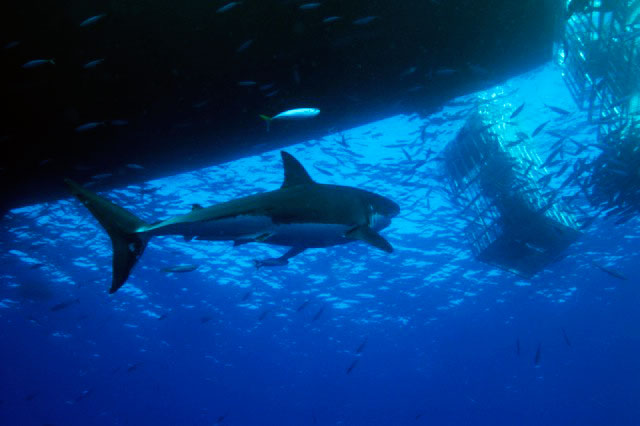
Oscar Ortiz heads up the team of Cabo Expeditions, offering wonderful eco-tours throughout Los Cabos and Baja California Sur.
